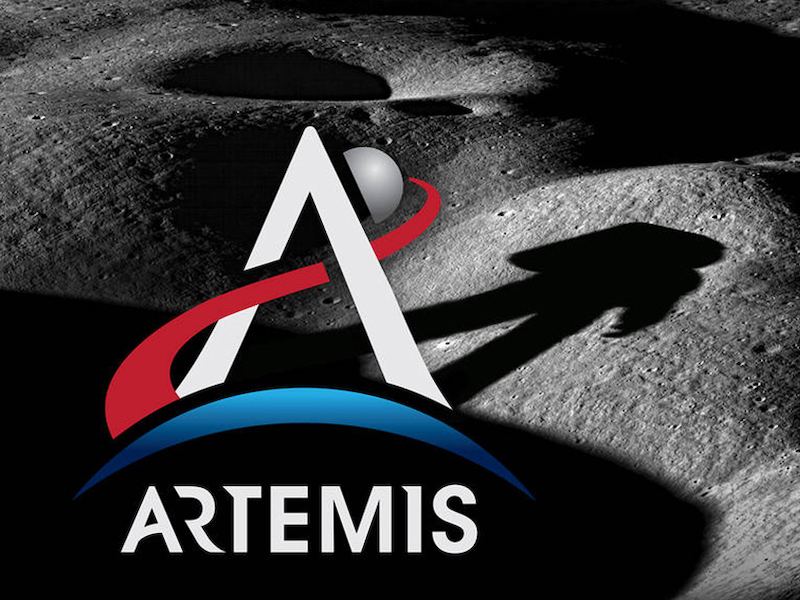News | May 31, 2018
NASA Releases Logo to Mark Apollo's 50th Anniversary

From October 2018 through December 2022, NASA will mark the 50th anniversary of the Apollo Program that landed a dozen Americans on the moon between July 1969 and December 1972. NASA unveiled an official logo for use in observing these milestone anniversaries Friday at the Kennedy Center for the Performing Arts in Washington.
The unveiling was part of “NSO Pops: Space, the Next Frontier,” a National Symphony Orchestra celebration of NASA’s 60 years of accomplishment.
The Apollo 50th anniversary logo is available for download from the NASA Images and Video Library.
Created by NASA graphic artist Matthew Skeins, the logo offers a nod to the past with a few elements borrowed from the original program emblem, and a glimpse into the future with a graphic depiction of NASA’s vision for the next half-century of deep space exploration.
The arc through the word “Apollo” represents Earth’s limb, or horizon, as seen from a spacecraft. It serves as a reminder of how the first views of Earth from the Moon – one of NASA’s crowning achievements -- forever transformed the way we see ourselves as human beings. It also affirms NASA’s intention to continue pushing the boundaries of knowledge and delivering on the promise of American ingenuity and leadership in space.
The original Apollo emblem, adopted by the program in 1965, used drawings of the Moon and Earth linked by a double trajectory to portray President John F. Kennedy’s goal of “putting a man on the moon and returning him safely to the earth” by the end of the 1960s. In a similar fashion, the Apollo 50th anniversary logo describes a contemporary goal, with images of the Moon and Mars filling the first and second “O”s, respectively, and the phrase “Next Giant Leap” beneath the word “Apollo.” Neil Armstrong declared his first step onto the lunar surface from the ladder of the Eagle lander on July 20, 1969, to be “one small step for a man, one giant leap for mankind.” Today, NASA is working to return astronauts to the Moon to test technologies and techniques for the next giant leaps – challenging missions to Mars and other destinations in deep space.
The original emblem was a composite design derived from the ideas of NASA employees and contractor personnel. It featured the constellation Orion overlaid on a capital letter “A.” The constellation was positioned so that its three central stars formed the bar in the initial for “Apollo.” In the 50th anniversary logo, elements of the same star field recall the collective effort of some 400,000 people who worked on the Apollo Program – an 11-year series of 33 spaceflights including six that reached the lunar surface. The three central stars are repositioned diagonally beside “50” to emphasize the many sacrifices made in pursuit of the lunar goal -- especially the lives of Apollo 1 astronauts Virgil “Gus” Grissom, Ed White and Roger Chaffee who perished in a capsule fire during a test on the launch pad in January 1967.
The star field, like the rest of the anniversary logo, is set against a blue nebula as an acknowledgement that human footprints on distant worlds is not too big a dream, and confirmation that NASA already is working toward that goal.
For more information about NASA’s plan for the future, visit:
https://www.nasa.gov/feature/nasas-exploration-campaign-back-to-the-moon-and-on-to-mars






